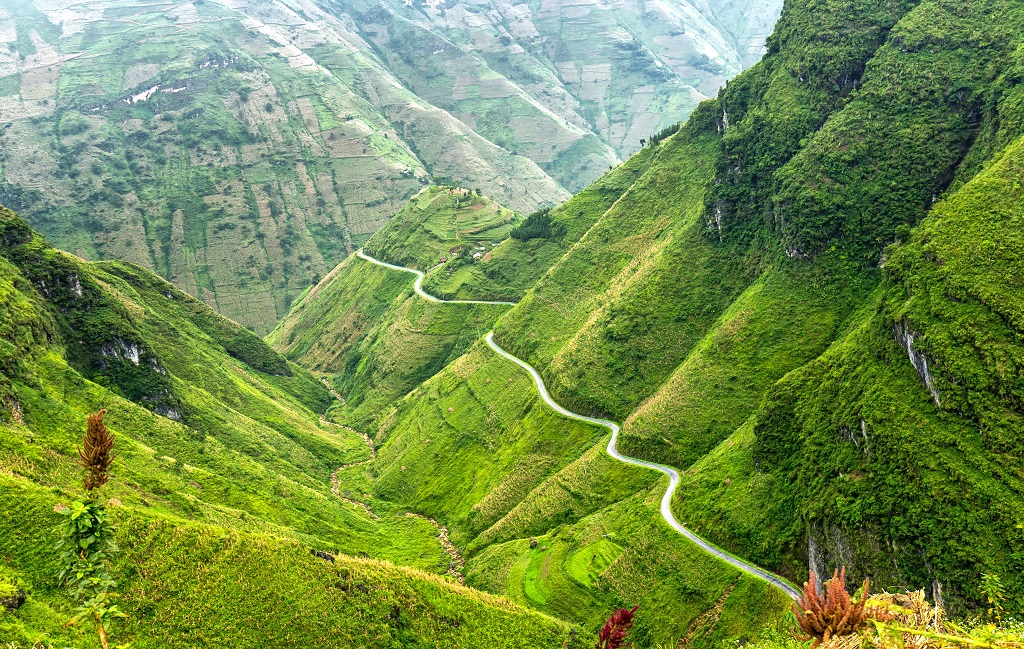Located in the Dong Van Karst Plateau, Ma Pi Leng Pass is renowned as one of the most treacherous and beautiful mountain passes in Vietnam. Not only does it offer breathtaking landscapes, but it also carries deep historical and cultural significance for the Ha Giang region.
1.The Road of Happiness – A Symbol of Resilience
The Road of Happiness connects Ha Giang city with the districts of Quan Ba, Yen Minh, Dong Van, and Meo Vac, with Ma Pi Leng Pass being the most challenging segment. This project began in 1959 and was completed in 1965, involving thousands of young volunteers and workers from 16 ethnic minority groups in the area. Many sections required blasting through mountains and manually carving paths through steep cliffs.
The name “Happiness” reflects the desire for a prosperous and peaceful life for the local people, while also serving as a testament to their resilience and solidarity in the nation-building effort.
2.Ma Pi Leng Pass – “Horse Nose Ridge”
In H’Mong language, Ma Pi Leng means “horse nose ridge,” referring to the treacherous and steep terrain that is so daunting that even horses need to stop to catch their breath. The pass stretches approximately 20 km and sits at an altitude of about 1,200-1,400 meters above sea level. The terrain here is both challenging and alluring, with winding roads and towering limestone mountains.
3.The Beauty of Tu San Gorge and Nho Que River
From the summit of Ma Pi Leng Pass, visitors can admire the panoramic view of Tu San Gorge – the deepest and narrowest gorge in Southeast Asia, with a depth of about 800 meters and a length of nearly 1.7 km. At the foot of the gorge flows the emerald green Nho Que River, meandering through the mountains, creating a majestic and poetic natural landscape.
The Nho Que River is not only a scenic highlight but also offers visitors the chance to experience boat rides or kayaking, enjoying the gentle glide through the vertical cliffs on either side.
4.Experiences at Ma Pi Leng
Ma Pi Leng Pass is a favorite destination for adventurers and explorers. Standing at the top of the pass, overlooking the entire karst plateau and watching the Nho Que River winding below, leaves a deep impression on travelers.
Additionally, visitors can stop by the surrounding villages to experience the life and culture of ethnic minorities such as H’Mong, Dao, Tay, and Giay. Here, traditional lifestyles are preserved, featuring terraced houses, highland markets, and unique festivals.

